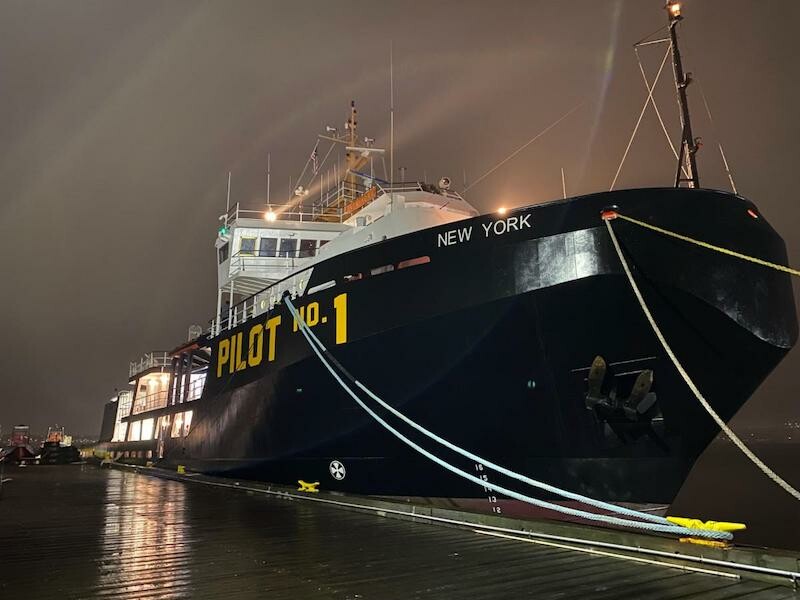In February, the Sandy Hook Pilots Association added a new pilot station boat to its fleet. The 208' New York, a converted oil spill response vessel (OSRV), is the largest boat in the Sandy Hook Pilots fleet.
The Sandy Hook Pilots currently operate a fleet of eight pilot vessels, which include three large pilot station boats, one medium-size pilot launch, and four small pilot launches. Pilotage service is available round-the-clock, with at least two pilot vessels on pilot station at the entrance to the Port of New York and New Jersey in most weather conditions.
In addition to the New York, the Sandy Hook Pilots retired its predecessor, also named New York. A symbol of safety and heroism, the now-retired pilot boat, a familiar sight around New York Harbor for nearly 50 years, made its last transit up the Ambrose Channel from the pilot station on Feb. 2.
The next day, the new New York sailed to its new home, the Sandy Hook Pilot base in Staten Island, N.Y., situated alongside its predecessor, the old New York, launching a new era of safety and efficiency for the New York/New Jersey harbor.
Formerly known as the Maine Responder, the new craft was made available by the Marine Spill Response Corp. after years of searching by the Sandy Hook Pilots for the right vessel to replace the aging New York. A full study of the OSRV was conducted with surveys of the entire vessel including sea trials of a sister vessel on pilot station to compare seakeeping and ship handling capabilities to the present station boats.
The conversion project was conducted in three phases. Phase one took place at Caddell Drydock and Ship Repair of Staten Island. It consisted of a hull inspection, dropped rudders, shaft inspection and a complete modification of the stern, readjustment of mast and observation tower and developing of anchor pockets. There was also an initial inspection and project approvals made by the American Bureau of Shipping and the Coast Guard.
The final two phases were completed at Feeney’s Enterprises, Kingston, N.Y. Two main projects that Feeney’s had to complete before seasonal weather changes were the tear outs of the vessel’s oil/water recovery system on deck and in the holds. New potable water tanks were fabricated to allow the vessel to keep stationed up to six weeks before returning for fuel and water. One major addition was the construction of a two-deck house that sleeps up to 28 pilots, with a pilot’s lounge and mess hall. The bridge wings were extended to give a clear view of the pilot launch landing area on each side of the vessel with a CCTV camera system installed throughout the vessel’s interior and exterior spaces.
Since the introduction of the new vessel in early February, the entire crew of apprentice pilots and permanent union crew (International Organization of Masters, Mates and Pilots, ILA, AFL-CIO) have been familiarizing themselves with the vessel and participating in training conducted by Maritime Pilots Institute, Covington, La.




